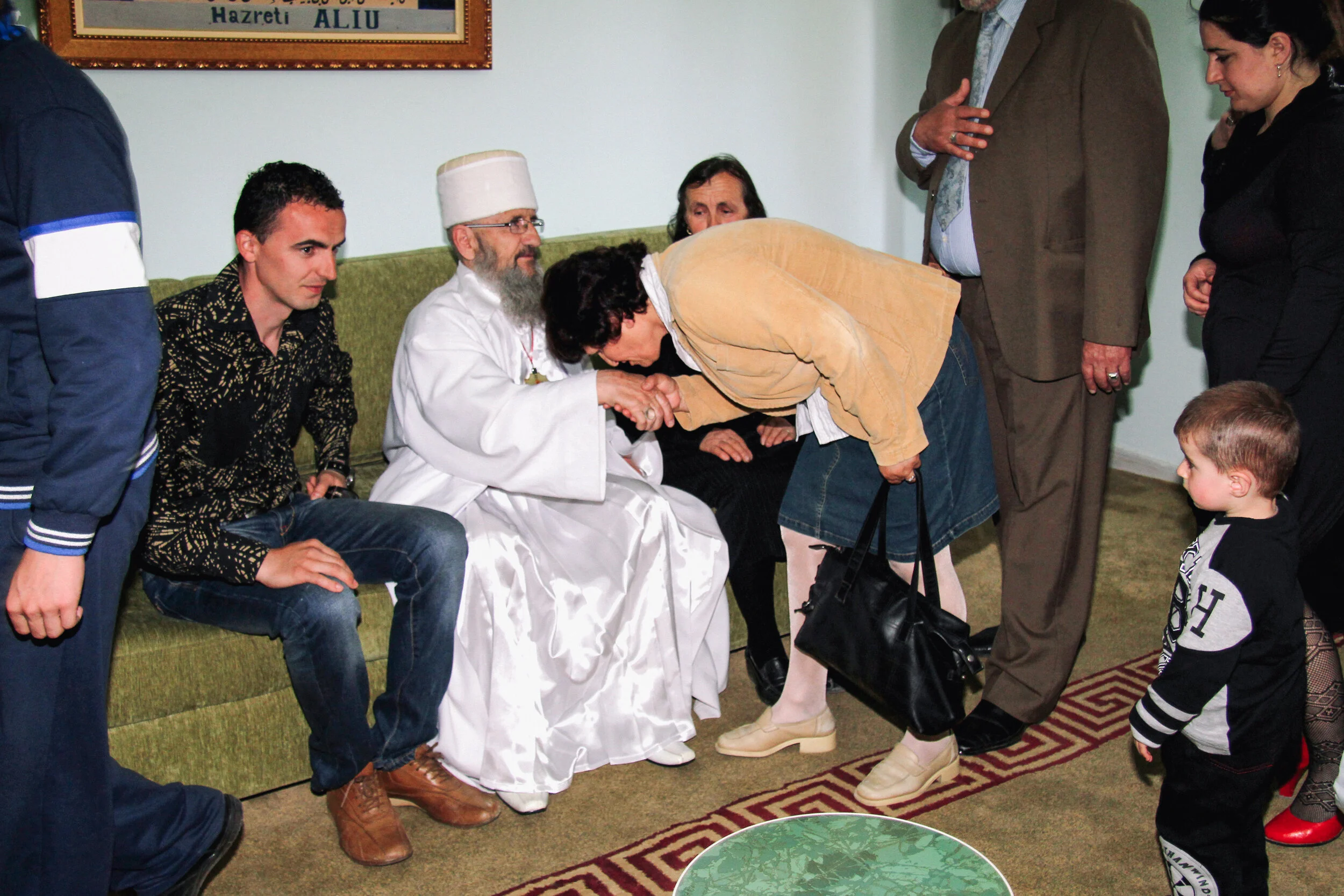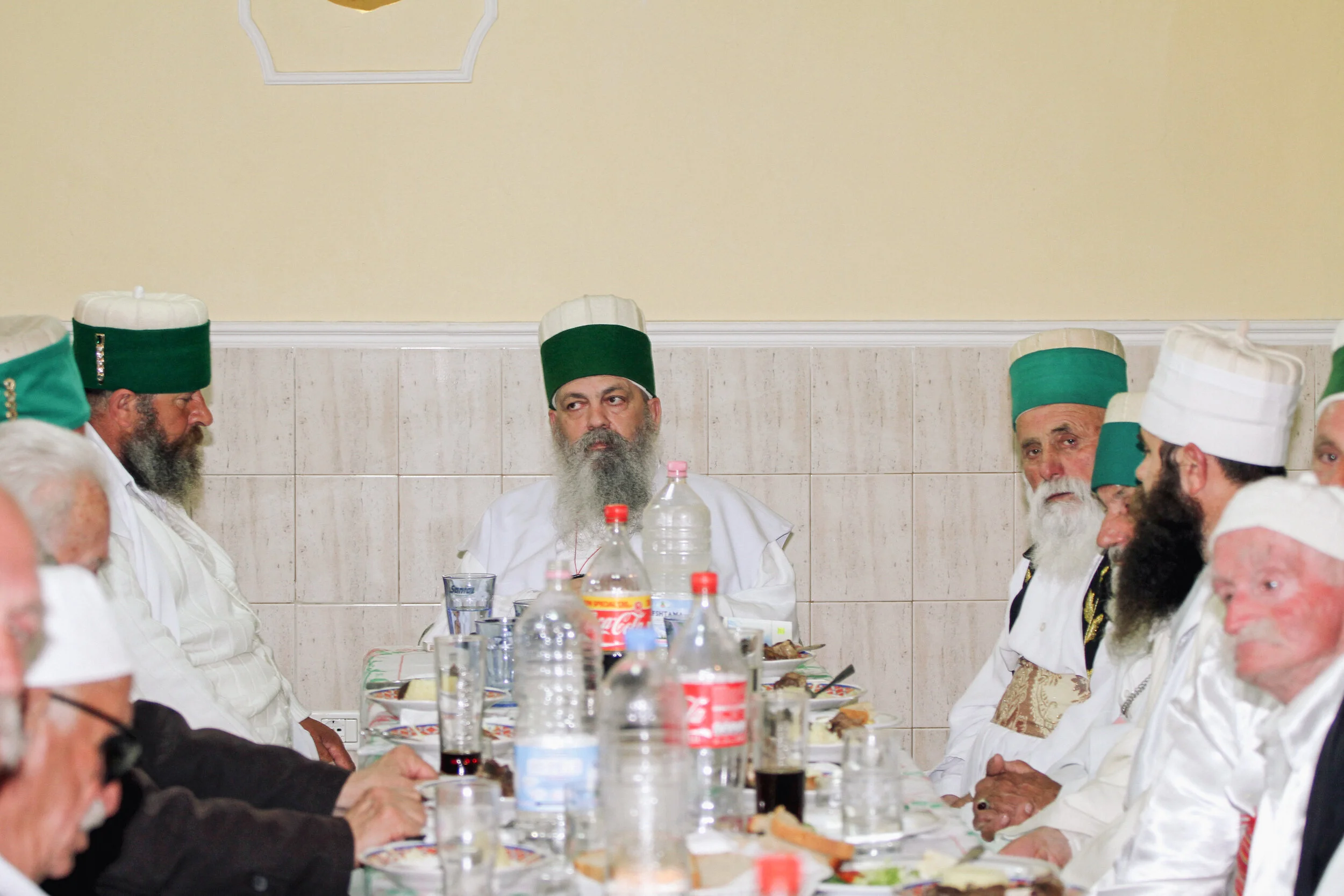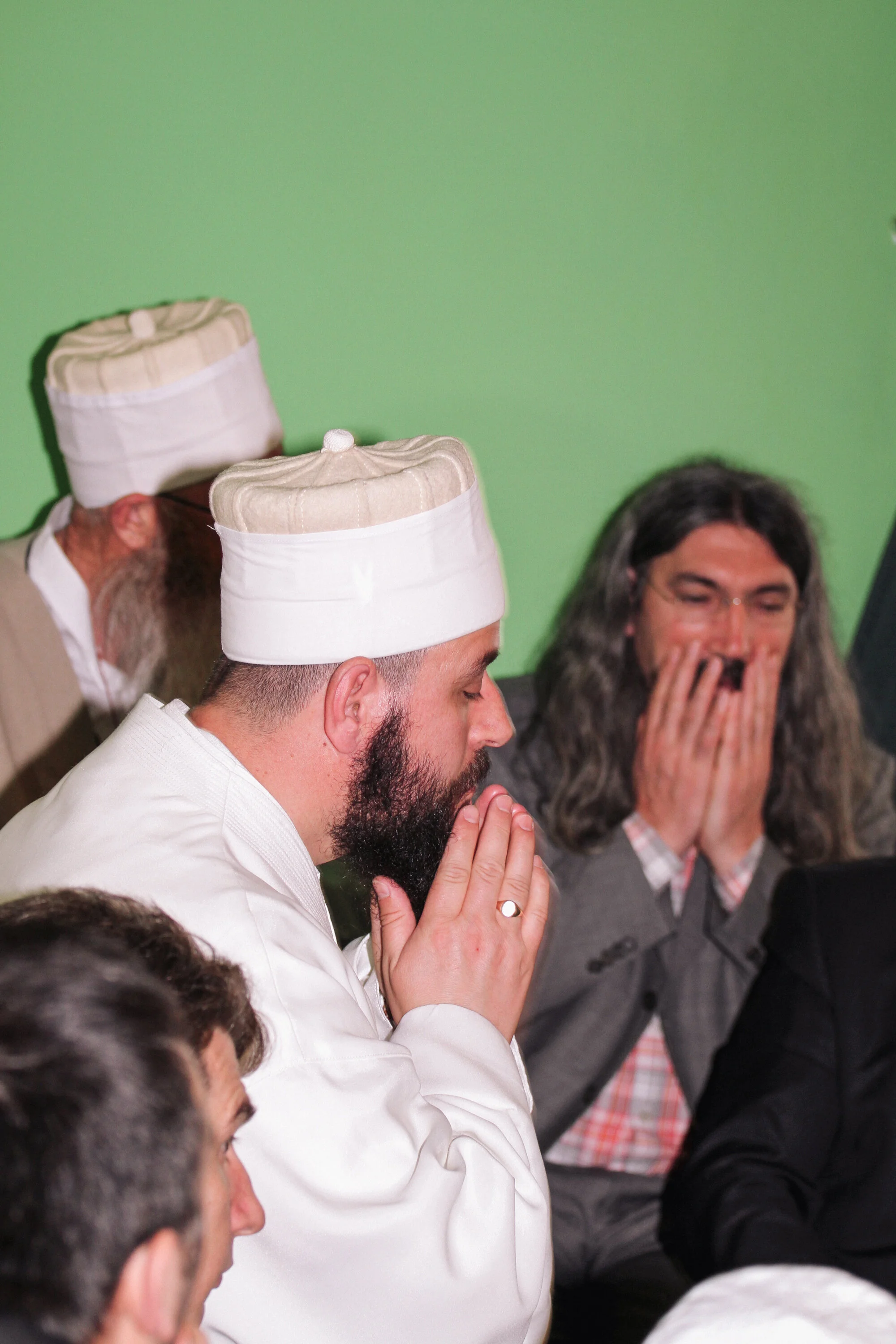The Albanian-speaking Bektashi Order of dervishes
Sufism in Eastern Europe
Ethnographic fieldwork in Albania, Kosovo, Macedonia, 2011–2019 | Conducted within the framework of the research project ‘The Visual and Material Culture of Sufism in Central and Southeastern Europe’ | Outcome: 21 conference papers, 4 peer-reviewed book chapters, and 5 more forthcoming
In the Balkans, the Bektashi Order of dervishes is today mainly confined to Albanian-speaking communities in Albania, Kosovo and Macedonia, where it began to take root among the Muslim population at the beginning of the 16th century and evolved in the context of Ottoman Albanian regional traditions. Following a long period of complex and often ambiguous relations between Sufi communities, the Sunni Muslim Ottoman authorities, and representatives of local orthodoxies, the Bektashi order was banned by the Ottoman Sultan Mahmud II (r. 1808–1839) in 1826 on the basis of accusations of antinomian behavior including the custom of neglecting ritual prayers and other religious duties. Throughout the Ottoman realm, many Bektashi lodges (Turk. tekke) were transferred to more sharia-conforming Sufi orders, such as the Naqshbandiyya, or were sold on behalf of the state treasury and, for the most part, subsequently destroyed. Sunni Islam in Albania was aligned with Ottoman rule and the Arabic language, but the Bektashi were receptive to Albanian patriotic concerns and actively helped to promote the Albanian language, contributing to the development of Albanian literary culture. They played a dominant role in the Albanian national awakening (Alb. Rilindja) that developed after the fall of the Ottoman Empire, in the period extending from the second half of the 19th century to the Declaration of Independence in 1912.
After the headquarters of the Bektashi order (the Tekke of Haji Bektash Veli or Pir Evi) in Hacıbektaş in central Anatolia was closed by Republican Turkey in 1925, the then head of the order, Salih Niyazi Dedebaba (1876–1941), who was himself of Albanian origin, moved to Albania and established the World Headquarters (Alb. Kryegjyshata) of the Bektashi order in Tirana. The Albanian Parliament approved the statute of the Albanian Bektashi community in 1930 and the Albanian language was made the official language of the order. This facilitated the expansion of the order in southern and central Albanian territories, which came to an end with the communist takeover of Albania at the end of the Second World War when the Bektashi order became a target of Enver Hoxha’s government (1944–1991). The anti-religious policy in Albania culminated in 1967 when religion was categorically outlawed and any open expression religious belief or affiliation became a criminal offence.
With the collapse of the atheistic communist regime in 1991, religious freedom was restored to Albania. However, two decades of government-imposed atheism meant that Bektashi lodges (Alb. teqe) had to be reclaimed and renovated, tombs (Alb. tyrbe, Turk. türbe) restored, and a new generation of spiritual guides (babas) and dervishes instructed in doctrine and ritual. Due to the destruction of much of its traditional architectural and artistic heritage, hardly any of the visual culture of Albanian Bektashi institutions pre-dating the 1990s has survived. Similarly, in Yugoslav-era Kosovo and Macedonia or, more recently, during the 1998–99 conflict in Kosovo, Bektashi institutions suffered serious damage. The important teqe complex in Ðakovica (Gjakovë) in Kosovo, the Komuniteti Bektashian Gjyshata e Kosovës Teqeja Gjakovë, was deliberately targeted and razed to the ground during that war. Parts of the beautiful Bektashi Arabati Baba Teqe (said to have been established in 1538 and renovated in the early 19th century) in Tetovë (Turk. Kalkandelen) in North Macedonia, the largest teqe complex in the Balkans and Turkey, were burnt down as recently as 2002 and again in 2010. Dervish Abdyl Beqiri (b. 1955), the representative of the Arabati Baba Teqe since 1994, has been witnessing assaults by armed members of the Islamic Community of Macedonia (ICM), who in 2002 seized part of the teqe compound and converted the Bektashi meydan (Alb. mejdan), the ceremonial room where Bektashi liturgical meetings (Alb. muhabet) are held, into a mosque. They have not left since.
Bektashism as a religion is deeply indebted to Shiʿi Islam. Bektashi adherents stress the pre-eminence of ʿAli ibn Abi Talib, younger cousin and son-in-law of the Prophet Muhammad, as the legitimate heir of the Prophet. In doing so they follow the common Shiʿite belief that ʿAli, whom the Prophet had adopted as a boy even before his first marriage and who was the first male to have accepted Islam, was the rightful Caliph. Above all, they consider ʿAli to have been the manifestation of the divine in this world.
ʿAli is acknowledged as the sahib-i risala, the repository of the Prophet’s knowledge. He is the revealer of the ‘esoteric’ Qurʾan, the sole gateway to the spiritual exegesis (Arab. taʾwil) of the Holy Book, a conviction maintained by Shiʿi theologians to this day, while the Prophet Muhammad is considered the natiq-i risala, the mouthpiece of the Qurʾan. In other words, the Prophet is seen as the vehicle by which the zahir (‘external’ or literal) Qurʾan became manifest to humanity, whereas ʿAli personifies batin (‘inner’ or esoteric levels of interpretation of the Qurʾanic verses) knowledge, the allegorical or hidden aspect of the divine.
In mystical exegesis, the terms are employed to differentiate between the esoteric and exoteric aspects of religious knowledge conveyed through the sayings and deeds of ʿAli. The batin aspect is accessed via spiritual hermeneutics, taʾwil, an interpretive process that also applies allegory and symbolism to the scriptural text. This is corroborated by a hadith report (or tradition attributed to Muhammad and his followers) which states: “I am the City of Knowledge and ʿAli is its Gate; one cannot enter a city without passing through the gate.”







































